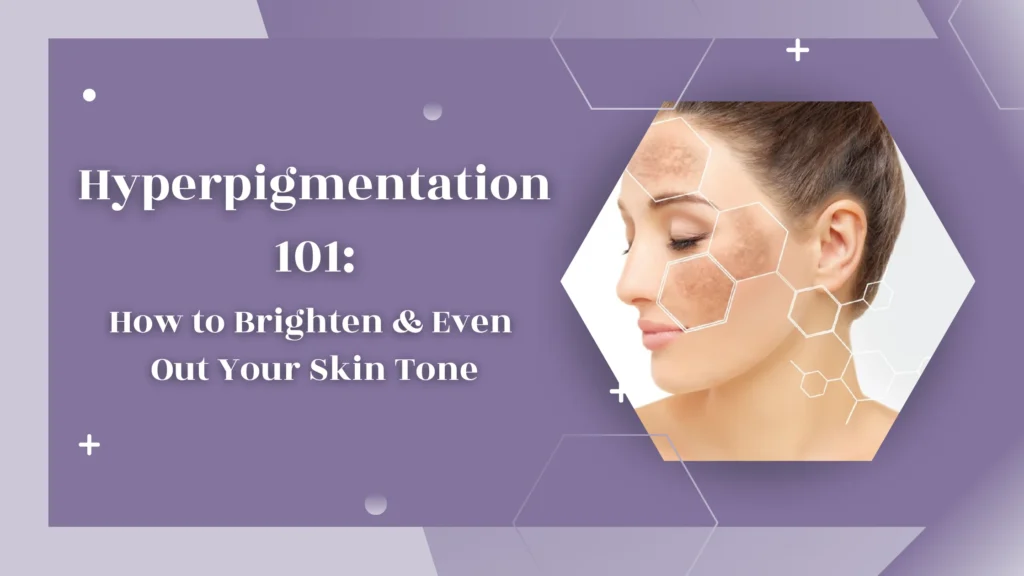Quicklinks
Menu
February 21, 2025
Blog

Hyperpigmentation is one of the most common skin concerns, affecting people of all ages and skin types. Whether caused by sun exposure, acne scars, hormones, or aging, those stubborn dark spots and uneven patches can be frustrating to deal with. The good news? With the right treatments and skincare routine, you can achieve a brighter, more even complexion.
Hyperpigmentation occurs when excess melanin—the pigment that gives skin its color—accumulates in certain areas, leading to dark spots or patches. It can appear anywhere on the body but is most commonly seen on the face, hands, and arms.
1. Sun Exposure: UV rays stimulate melanin production, leading to sunspots and freckles.
2. Post-Inflammatory Hyperpigmentation (PIH): Dark marks left behind after acne, cuts, or skin irritation.
3. Melasma: Hormonal changes, often triggered by pregnancy or birth control, leading to dark patches, usually on the face.
4. Aging: Over time, the skin’s ability to regulate melanin declines, causing age spots.
For those looking for faster, more effective results, aesthetic treatments can help fade hyperpigmentation significantly.
● BBL HEROic (BroadBand Light Therapy): This advanced light-based treatment targets melanin deposits, breaking them down
for a more even skin tone.
● Chemical Peels: Exfoliate the skin’s surface, helping to fade dark spots and reveal fresh, new skin.
● Laser Therapy: Targets deeper pigmentation and stimulates collagen production for smoother, clearer skin.
● Microneedling with PRP: Encourages skin renewal and reduces pigmentation by increasing cell turnover.
A solid skincare routine can prevent and reduce hyperpigmentation over time. Look for products with:
● Vitamin C: A powerful antioxidant that brightens and evens skin tone.
● Niacinamide: Helps reduce inflammation and prevents dark spots from forming.
● Retinol: Boosts cell turnover, helping fade pigmentation and improve skin texture.
● Hydroquinone: A prescription-strength skin-lightening agent used for stubborn dark spots.
Since UV exposure worsens hyperpigmentation, sunscreen is non-negotiable. Use a broad-spectrum SPF 30 or higher daily, even on cloudy days. Opt for physical sunscreens with zinc oxide or titanium dioxide for the best protection.
● Avoid picking at blemishes or scars to prevent post-inflammatory marks.
● Use sunscreen diligently to stop new dark spots from forming.
● Incorporate brightening ingredients into your daily skincare routine.
● Opt for professional treatments if pigmentation is persistent or severe.
Hyperpigmentation doesn’t have to be a lifelong struggle. With the right combination of treatments, skincare, and sun protection, you can restore a smooth, even-toned complexion. Whether you’re dealing with sunspots, melasma, or acne scars, a targeted approach will help you achieve the glow you deserve.
Embrace your skin’s journey with confidence. Let Younger You Aesthetics celebrate and enhance your unique beauty.
At Younger You Aesthetics, we’re dedicated to providing safe and effective treatments that enhance your natural beauty and boost your confidence.